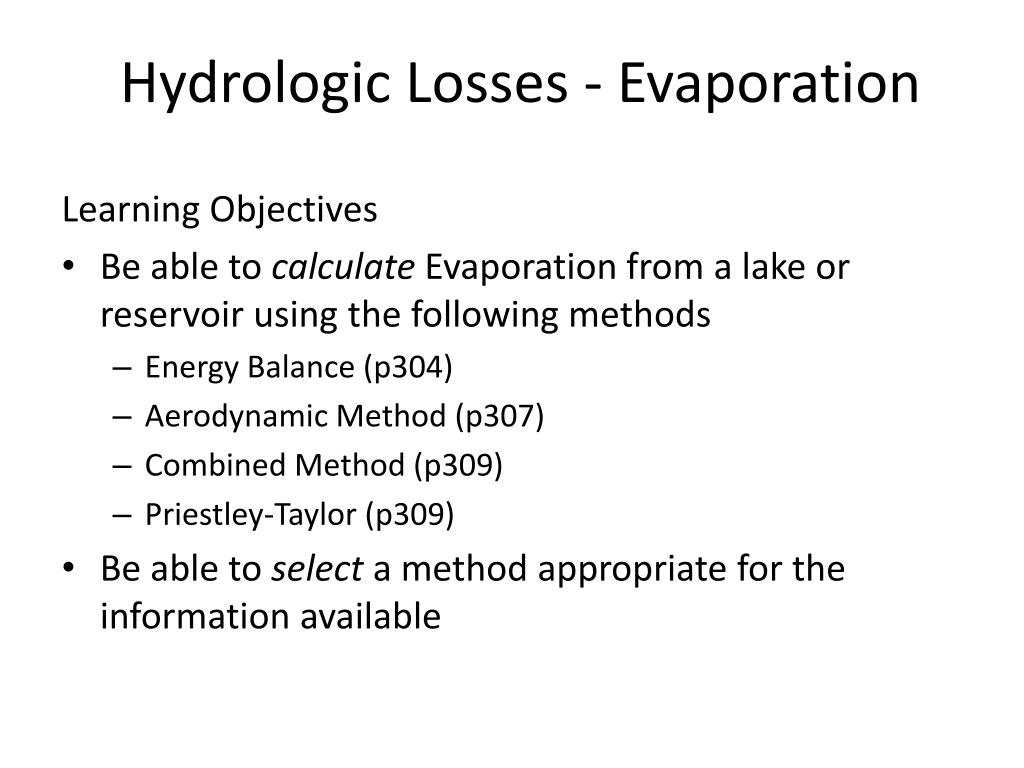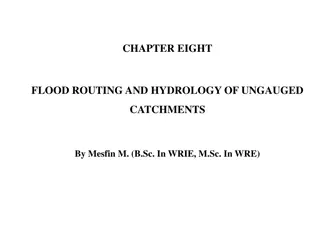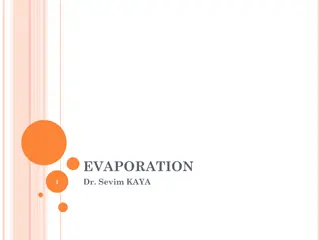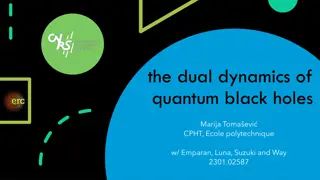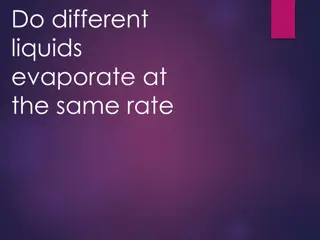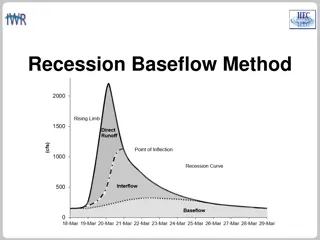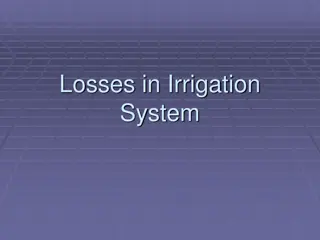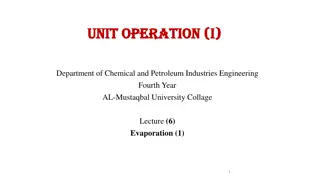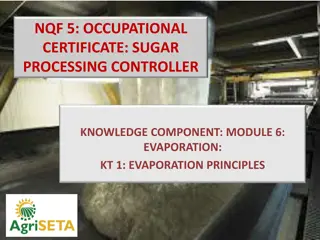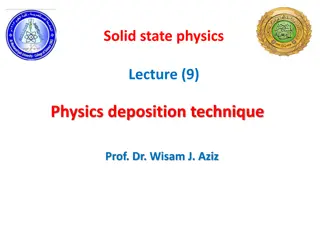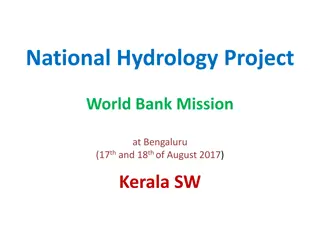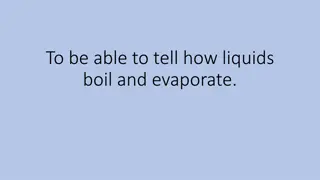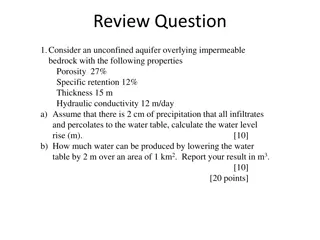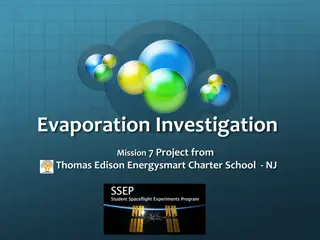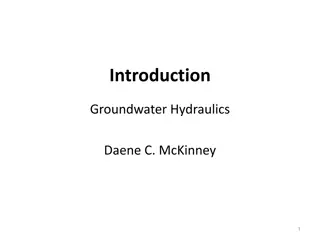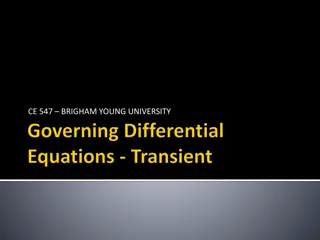Understanding Evaporation Methods and Implications in Hydrology
Learn how to calculate evaporation using various methods such as Energy Balance, Aerodynamic Method, Combined Method, and Priestley-Taylor. Understand the importance of evaporation and transpiration in the hydrological cycle, climate change predictions, and water availability for ecosystems and agriculture. Explore examples and equations related to evaporation rates, water vapor pressure gradients, and turbulent transport. Enhance your knowledge of boundary layer aerodynamics and the Penman formula for estimating evaporation.
Download Presentation

Please find below an Image/Link to download the presentation.
The content on the website is provided AS IS for your information and personal use only. It may not be sold, licensed, or shared on other websites without obtaining consent from the author. Download presentation by click this link. If you encounter any issues during the download, it is possible that the publisher has removed the file from their server.
E N D
Presentation Transcript
Hydrologic Losses - Evaporation Learning Objectives Be able to calculate Evaporation from a lake or reservoir using the following methods Energy Balance (p304) Aerodynamic Method (p307) Combined Method (p309) Priestley-Taylor (p309) Be able to select a method appropriate for the information available
Why do we care about Evaporation and Transpiration (ET) ? 70% of precipitation that falls on the US is evaporated Water vapor role in atmospheric circulation, land feedback to atmosphere, understanding and predicting climate change Q=P-ET. P-ET is the water available for use ET "loss" supports ecosystems and agriculture Reservoir losses The antecedent "wetness" that determines what happens to runoff depends on ET
Energy Balance at the Earth Surface Rn = G + Hs+ LE Latent Heat of Vaporization = 6 . 2 501 10 2370 lv T J/kg J/m2/s or W/m2 LE = lv wE From Mays, 2011, Ground and Surface Water Hydrology
Evaporation Example (7.3.1) Given net radiation of 185 W/m2, air temperature 28.5 C, RH=55%, wind speed = 2.7 m/s at height of 2 m Calculate Evaporation by - Energy balance (assuming Hs and G are zero) - Aerodynamic method - Combined method - Priestley-Taylor method
Aerodynamic Method (p307) Evaporation rate as a function of water vapor pressure gradient and turbulent transport = Primary inputs u wind speed typically at 2 m es saturation vapor pressure at the surface ea vapor pressure of the air, depends on temperature and relative humidity B(u) depends on wind and surface roughness ( ) ( ) E B u e e s a Does not require Energy information
Boundary Layer Aerodynamics From Chow et al., 1988
Combined Method (Penman) (p309) + + = + E E E r a 4098 de e + = = s as = ( ) ( ) E B u e e 2) a as a ( 237 3 . dT T Vapor pressure deficit (drying power of the air) Equation 7.3.20 in text missing exponent 2 Does not require surface information uses only meteorological information
Priestley Taylor Method (p309) + + = + E E E r a ~70% ~30% + 3 . 1 E r E
Method Information Requirements Mass Transfer Energy Balance u e T RN Combination a a e T s s
Summary Energy exchanges and energy balance Turbulent diffusion into the atmosphere Adjustment and balance + + = ( ) H K u - T T - RN s h s a = ( )( ( ) ) LE B u e T e s s a - + Conditions adjust to varying inputs. Calculations can interpret measurement, but should not be used to predict the effect of changing one variable without considering the adjustments of connected variables
